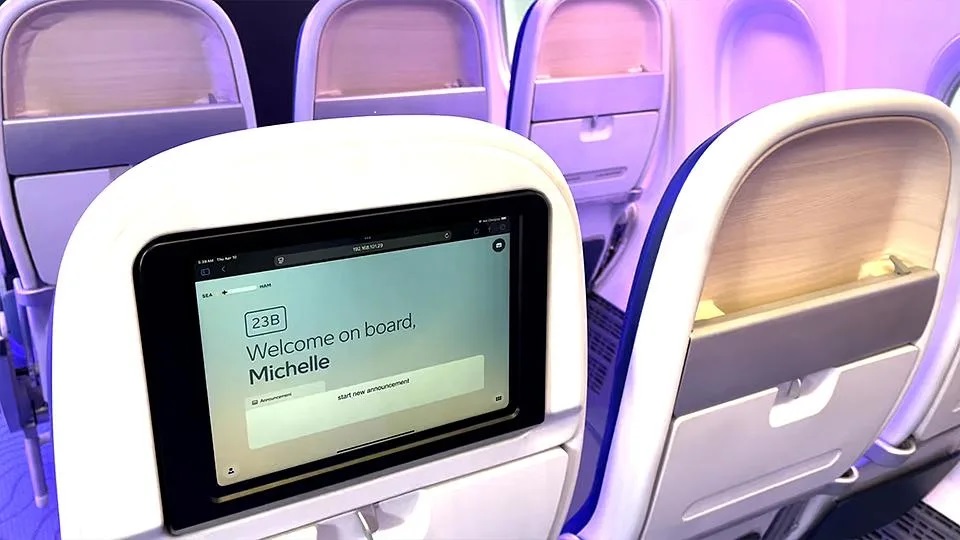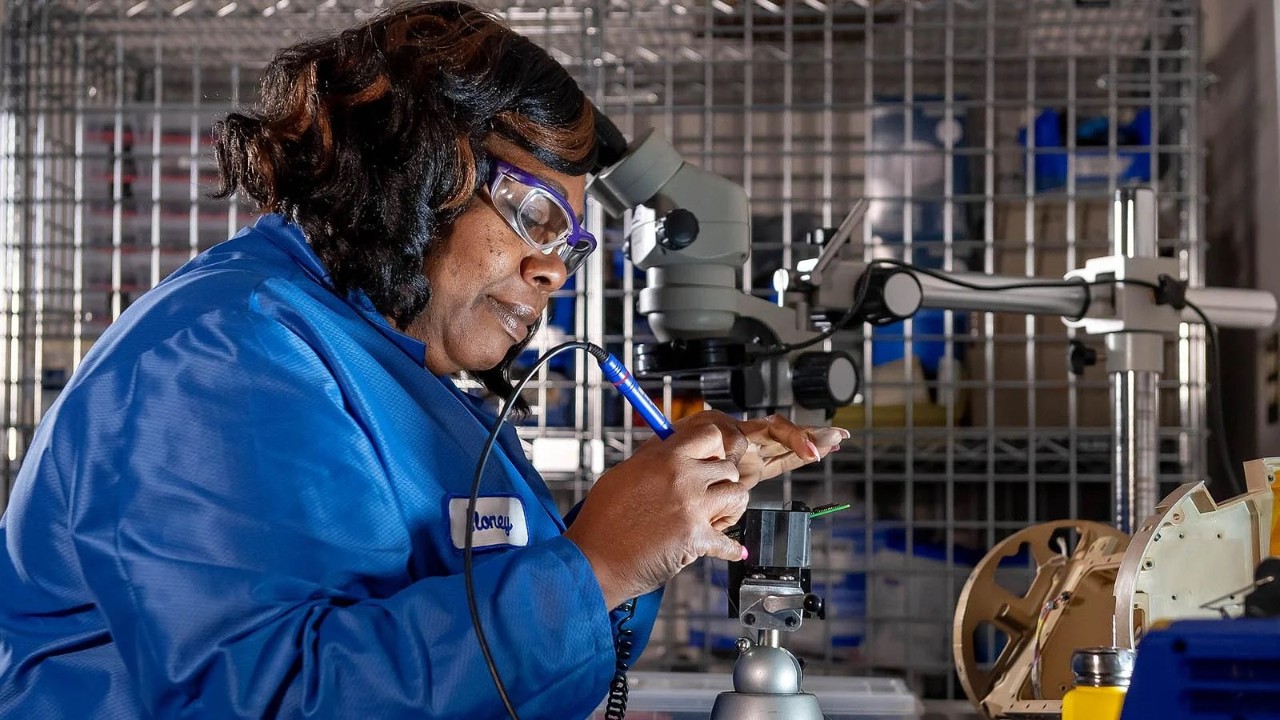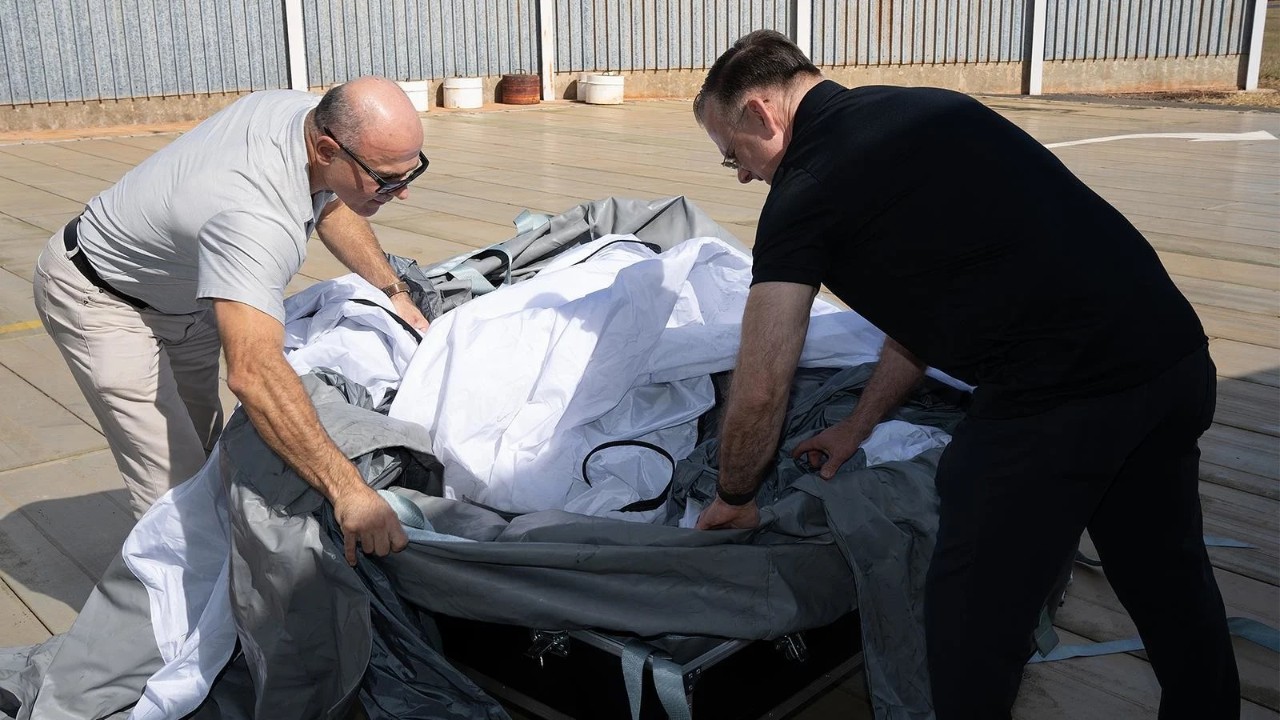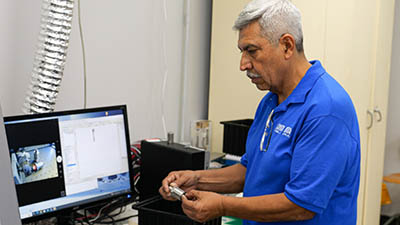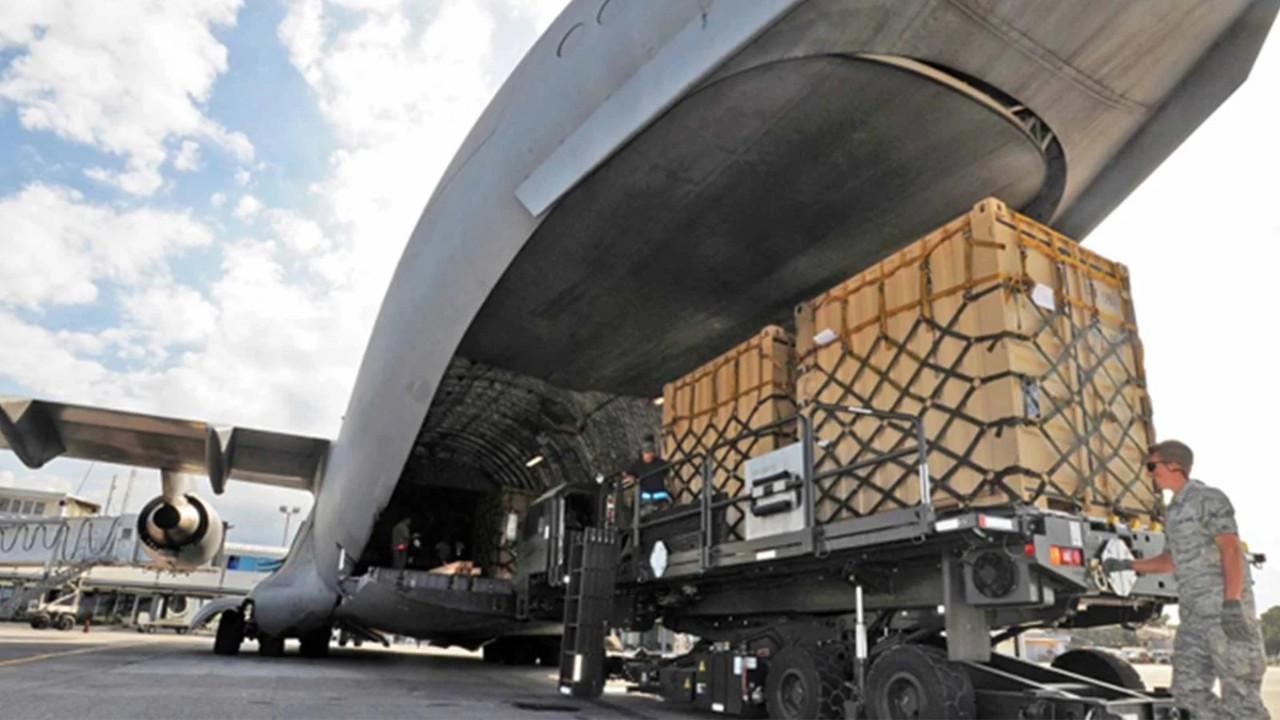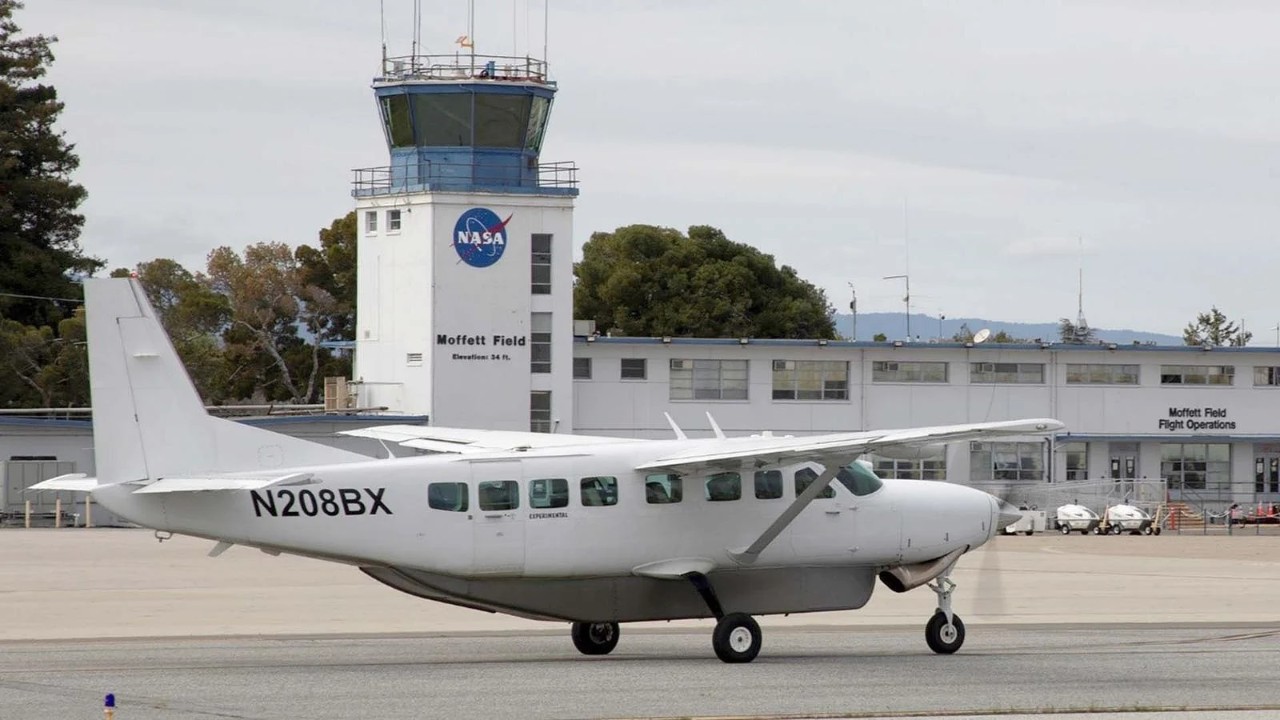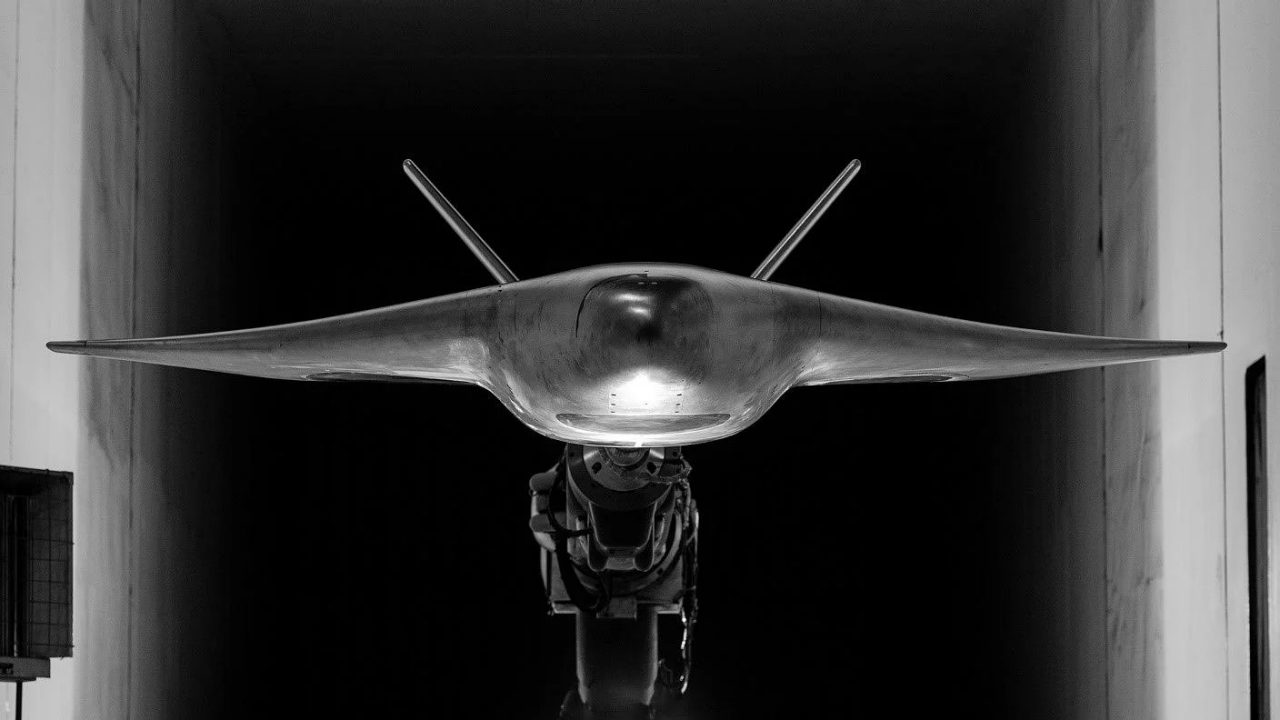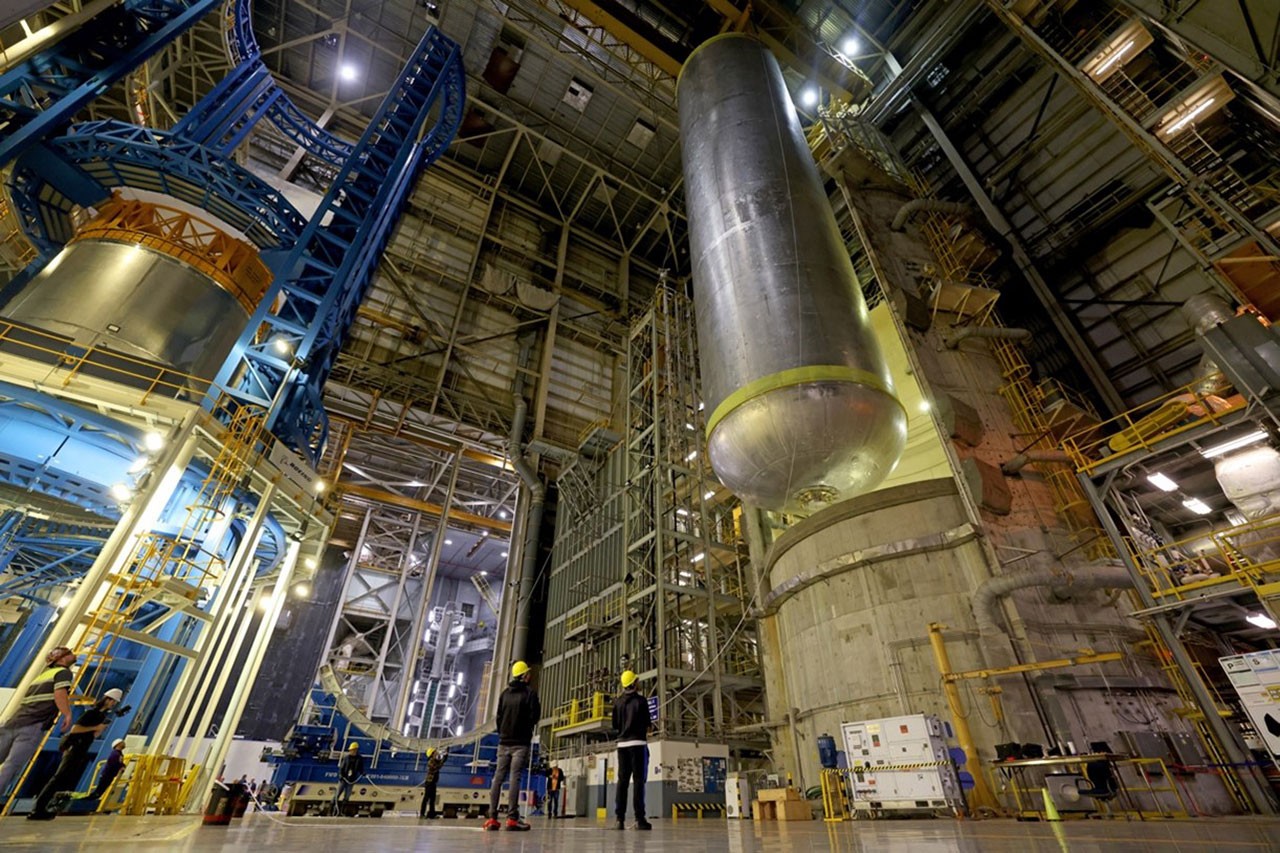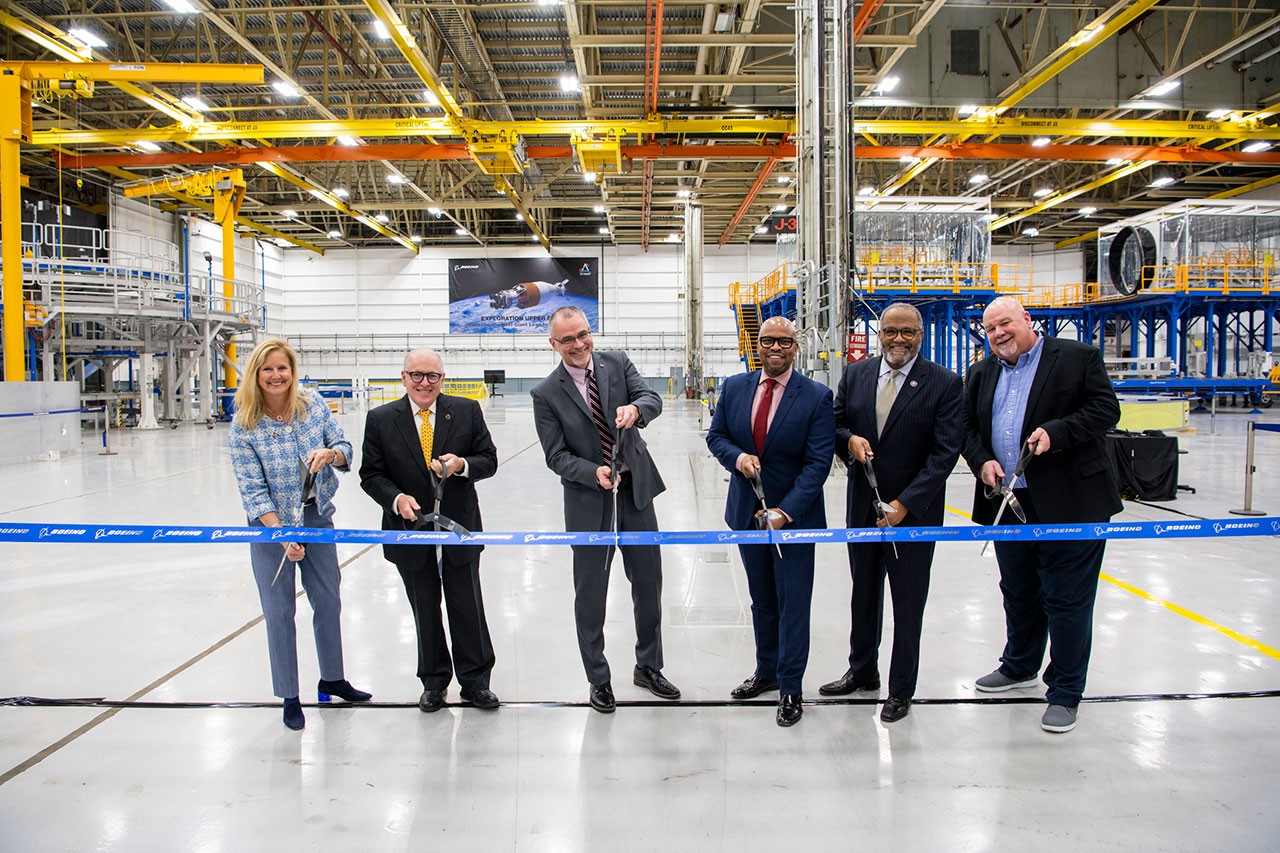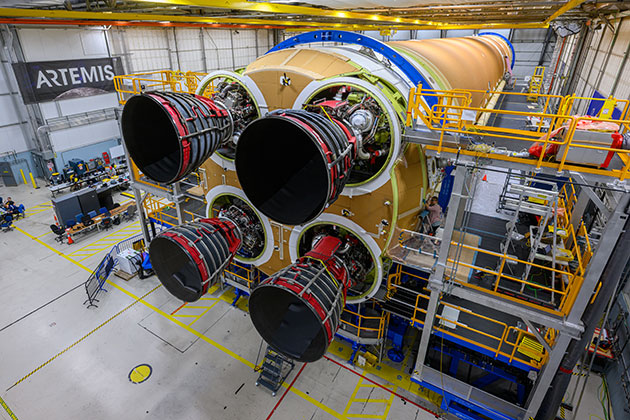The 787 Dreamliner Difference
Technical Fellows calculate the contributions of composites
 SPOOLS OF INNOVATION: Boeing Technical Fellow Karin Anderson looks into the carbon fiber tape dispensing system of an automated fiber placement machine at Boeing South Carolina. PHOTO: KAITLIN STANSELL/BOEING
SPOOLS OF INNOVATION: Boeing Technical Fellow Karin Anderson looks into the carbon fiber tape dispensing system of an automated fiber placement machine at Boeing South Carolina. PHOTO: KAITLIN STANSELL/BOEING
BY KAITLIN STANSELL, BOEING WRITER
Twenty years ago, Boeing engineers predicted the use of composite materials in the design of the 787 Dreamliner would improve efficiency, durability, and even passenger comfort. Seeing the results after more than a decade in service, Boeing Technical Fellows count the promises made as promises kept.
Dreamliner by design
Boeing’s introduction of the 787 Dreamliner in 2004 signaled a significant departure from traditional commercial airplane manufacturing. With an airframe comprised of 50% carbon fiber reinforced plastic and other composites, the 787 entered history as the Boeing commercial airplane with the most extensive use of composite materials. Designers believed composites would offer numerous advantages over conventional aluminum designs, and they have since proven the advantages of composites are real.
“We have learned that composite structures can result in an unprecedented combination of efficient and robust structure design,” said Boeing Technical Fellow Patrick Enjuto. “Some of our earlier 787s are currently undergoing their first major maintenance inspections with excellent results. Operators are going in all the way to the bones of the airframe to get an extensive look at how the airplane is performing in service.”
Extensive testing has proven the durability of the Dreamliner’s composite airframe, Enjuto said. To date, about 700 in-service airplanes have undergone routine maintenance checks, revealing zero evidence of composite airframe fatigue.
787
The first decade by the numbers
- Opened more than 410 new nonstop routes
- Flew nearly half of the 15 longest routes in operation today
- Made more than 4.4M flights
- Served over 900M passengers
On average, each 787 operates about 600 flights per year.
Thanks to the material properties of composites and their use on the 787 fuselage structure, passengers enjoy the view from the largest windows available for commercial jets. Beyond the open-cabin aesthetic, Enjuto said composite materials offer more options in cabin design, contributing to lower cabin altitude pressurization and increased cabin humidity.
According to 787 Chief Engineer John Murphy, composite materials reduce airplane weight and provide aerodynamic benefits, contributing to the 787 Dreamliner being up to 25% more fuel-efficient than previous-generation airplanes. Since entering service in 2011, the 787 has avoided more than 170 billion pounds (77 billion kilograms) of carbon emissions.
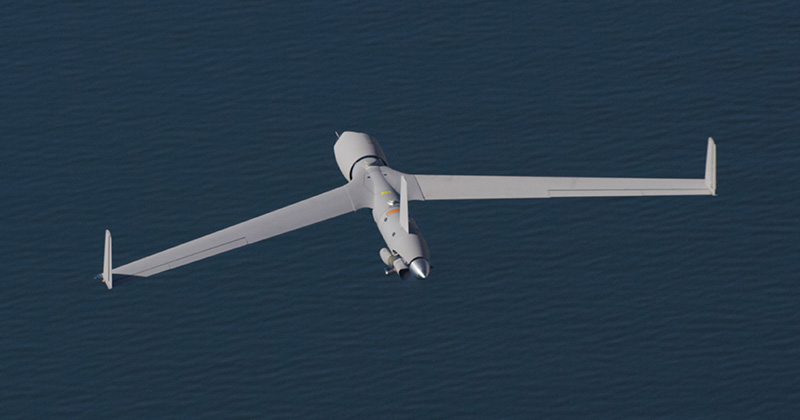 SPOOLS OF INNOVATION: Boeing Technical Fellow Karin Anderson looks into the carbon fiber tape dispensing system of an automated fiber placement machine at Boeing South Carolina. PHOTO: KAITLIN STANSELL/BOEING
SPOOLS OF INNOVATION: Boeing Technical Fellow Karin Anderson looks into the carbon fiber tape dispensing system of an automated fiber placement machine at Boeing South Carolina. PHOTO: KAITLIN STANSELL/BOEING
End-design in mind
Composites have transformed airplane design, offering several advantages over traditional materials:
- High strength-to-weight ratio: Composites are often stronger than steel yet lighter than aluminum, making them ideal for airplane construction.
- Corrosion resistance: Unlike metals, composites do not corrode, enhancing durability, especially in harsh environments.
- Fatigue resistance: Composites can endure cyclic stresses without degradation, improving the life span of the airplane.
- Design flexibility: Composites can be molded into complex shapes, allowing for more innovative and efficient structures.
“One of the disadvantages to metals is they cannot be formed easily. Composites allow design engineers to take a more artistic, inspired-by-nature approach. You can soften the wing to look more like a bird’s wing for example, improving performance with a more aerodynamic and even elegant design,” said Boeing Technical Fellow Karin Anderson.
Boeing’s pioneering use of composites in the 787 Dreamliner set a precedent that continues to influence future products, most notably the 777X, which features an extraordinary composite wing design.
